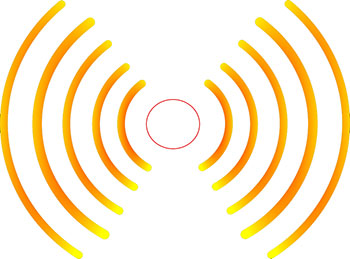E.T. Still Can’t Phone Home, But Signal Processing Solves Many Technology Challenges
Top Reasons to Join SPS Today!
1. IEEE Signal Processing Magazine
2. Signal Processing Digital Library*
3. Inside Signal Processing Newsletter
4. SPS Resource Center
5. Career advancement & recognition
6. Discounts on conferences and publications
7. Professional networking
8. Communities for students, young professionals, and women
9. Volunteer opportunities
10. Coming soon! PDH/CEU credits
Click here to learn more.
E.T. Still Can’t Phone Home, But Signal Processing Solves Many Technology Challenges
Pete Wyckoff, Signal Processing Consultant & IEEE Member
In 1982, E.T. was stranded on Earth and his fate depended upon phoning home using a Texas Instruments Speak & Spell – a child’s toy – precariously wired to a Columbian coffee can and a dingy turntable record player, which appeared to be playing a circular saw rather than an actual record. The Speak & Spell was a contemporary marvel built upon years of engineering research into speech synthesis. Computers could talk to us in 1982; nonetheless phoning a distant galaxy with such a makeshift contraption presented a few obstacles. Although challenges prevail – for good reasons – signal processing and systems engineering help to overcome many of the barriers.
Phoning a distant galaxy takes time for the signals to propagate. Light or radio waves travel from the sun to the earth in about eight minutes. Phoning deep space requires patience. NASA’s Voyager spacecraft has ventured deep into space; hours elapse as one radio blip travels from the spacecraft to the earth. The same phenomenon afflicts systems that are more ordinary. Commercial communication satellites often fly in geo-stationary orbit. As a benefit, these satellites appear to stay in one place. Customers can point a dish antenna, such as DirecTV, and never move it again. The satellite is in fact moving and its motion matches earth’s rotation to complete the illusion of staying put. A satellite that is actually still would fall out of the sky in homage to Sir Isaac Newton’s apple.
The problem with geo-stationary orbit is time-delay because the satellite must fly around 22,000 miles above the earth. When you phone someone through these satellites, there is about one-quarter of a second delay for one-way transit time. That is noticeable and perhaps annoying. If you need quick access to data, there are different problems. Requesting data requires at least one up-and-down trip to ask for the data plus another to deliver the data. None of the desired data reaches you during the first half-second or longer. 
Gaining lower latency requires the satellites to fly closer to earth. At lower altitudes, the satellites appear to move very quickly and one satellite covers less geographic area at a time. One of these closer satellites could drop the communication delays to milliseconds, but the satellite might only visit one city for several minutes before flying-off to another part of the globe. Customers want communications at any moment; meeting that demand with small delays requires a huge number of low flying satellites. One present day effort, called OneWeb, will design, manufacture and launch 648 satellites in 2018. The financial constraints demand great advances because a huge number of satellites are needed, which explains why low-cost satellite manufacturing and launch is a key innovation of OneWeb’s design. The constellation will deliver high-speed internet access to the entire globe once completed.
Another challenge from E.T.’s long-distance call is power. As a wave travels away from a transmitter, it spreads out over a greater area. In free-space the power density decreases proportional to the distance squared. If the distance is large, then the loss is huge. Engineers make-up for this using a few different tricks. A large antenna will collect more power by concentrating the power density from over a large area. The Very-Large Array in Socorro, NM gathers energy using 27 antennas that each measure 25 meters in diameter and each weigh 230 tons: the total collection area is over 13,000 square meters.
However, as such a large antenna is rarely practical outside of radio astronomy, using a very slow data rate is another trick to coax long-distance from a system. Gathering power over time delivers energy; gathering for a longer time delivers more energy. Slow transmissions take this to extremes. Groups of radio amateurs, led by Nobel Prize winning Physicist Joe Taylor, detect one another’s faint whispers using the aptly named radio mode called WSPR and a web page called WSPRNet posts live signal reports. The signal processing sends approximately 1.5 bits per second – a meager trickle compared with internet speeds. A complete transmission lasts just under two minutes and the slow rate is purposeful. Using a $35 Raspberry Pi, along with a simple filter and a piece of wire for an antenna, signals can reach around the globe. Merely toggling one general-purpose bit in the computer delivers enough power to reach directly from the United States to Australia wirelessly using WSPR. Add-on kits, such as the Radwav SkyPi, help to make these contacts more robust while still sending far less power than a nightlight consumes.
Nearly thirty-five years after E.T.’s earthly debut, engineering has still fallen short of phoning a distant galaxy, for many good reasons, but clever signal processing and a $35 educational computer designed for students can reach more than 18,000km wirelessly. Oddly enough, since E.T’s visit, the record player has made a comeback. Noteworthy modern artists, such as Mumford and Sons, still release vinyl records. Nowadays you can play records using a laser beam – from a company called ELP – but at $15,000 that record player might be the sort of innovative signal processing hardware that you hide when aspiring engineers or extra-terrestrials wield their wire-cutters.
SPS Social Media
- IEEE SPS Facebook Page https://www.facebook.com/ieeeSPS
- IEEE SPS X Page https://x.com/IEEEsps
- IEEE SPS Instagram Page https://www.instagram.com/ieeesps/?hl=en
- IEEE SPS LinkedIn Page https://www.linkedin.com/company/ieeesps/
- IEEE SPS YouTube Channel https://www.youtube.com/ieeeSPS











